Two years ago, Los Angeles-based filmmaker JEFF NORD released an intriguing fan film: COMMANDERS OF STARFLEET. Although less than six minutes in runtime, the short film did a brilliant job of reinterpreting Star Trek as a black and white 1930s/40s-style sci-fi adventure. It was a truly fun viewing experience and excellently crafted to look and feel like Star Trek meets the original Flash Gordon movie-matinee serial.
When Jeff announced that he was working on yet another reimagining of Star Trek, many of use expected 1940s or 1950s-style sci-fi. Instead, DEFENDERS OF THE FEDERATION turns out to be early-1970s in look and concept. Check it out…
Of course, “reimagining” Star Trek in the 1970s isn’t really necessary. The animated series aired in 1973-74, and of course, Star Trek: The Motion Picture caught the last few weeks of the 1970s be debuting on December 6, 1979. That said, there was a tremendous difference between the kind of sci-fi you’d see in the early versus late 1970s, and Defenders of the Federation is definitely in the earlier category.
Nevertheless, I was curious to find out why Jeff decided to “fast forward” the era. And that brings us to part one of a really fascinating interview with LOTS of behind-the-scenes photos…!
JONATHAN – Why the leapfrog over 1940s and 1950s, Jeff ? And will you be going back to those?

JEFF – It originally was gonna be another 30s/40s-era serial. That being said, it was never going to be a direct sequel to Commanders of Starfleet. I know I had that cliffhanger at the end of the film teasing an episode 2, but I only really did that because that’s just how those old serials ended. The original idea for Defenders of the Federation would’ve been further along in the series, almost like someone from now was finding these lost serials in a vault or salt mine or something, and uploading what there was to YouTube.
So after I finished Commanders, I made a non-Trek-related film. Once I completed that, I wrote the first draft for Defenders. You’d think that’s when I’d get started with production, but instead I was like, “Nah, one more non-Trek film first.” Then, once that was done, I circled back to Defenders.
Going to a hobby store and kit-bashing existing model kits wasn’t going to cut it this time. There really isn’t anything from the 40s era you can use. But it crossed my mind there were probably toys around that time period that had that Flash Gordon/Buck Rogers look. So I started scouring eBay for vintage spaceship toys—which, by the way, searching for keywords like “vintage toys” gives you results from 1930 to about 2005 at this point! And yeah, I started finding things that had the right look that I could paint and modify a bit, and we’d be good to go.
But then I had this random thought of: wouldn’t it be cool to see Star Trek if had more of a Star Wars or Battlestar Galactica look to it? You know—ships with that kludgey, grebeled texture, starfighters zipping around…sort of like, if between the original series and The Motion Picture, when the first Star Wars came out, some studio exec was like, “Hey let’s bring Trek back, but make it like Star Wars because that’s really popular right now.”
I’ve also always loved that era of sci-fi and VFX. It doesn’t always look great, but there’s a charm to the models and work done, and really, it was one of the inspirations that got me into filmmaking.
But that thought was followed up by, “Nah, no way. That’s too hard to pull off.” I’d have to spend so much time and money kit-bashing models to get the right look, not to mention I have no idea how to do those types of VFX. Hanging models from wires in front of a backdrop wasn’t going to work for this. S o I kept scouring the net for things I could use for the 40s era version of Defenders.

But then I happened across what would become the miniature for the USS Acheron. I don’t think it was ever part of any show or movie, just some generic sci-fi toy from 1996. But it had absolutely the right shape and a lot of the texturing I’d need for a 70s Star Wars-ish Trek film. At that point I shelved any version or thought of doing another 40s film and switched gear to the 70s.
JONATHAN – What went into the preparation (pre-production) on this project?
JEFF – First thing I had to do was rewrite the script. The original version of Defenders was very tailored to the 40s serial era, and I needed to bring it up a couple decades. What that really means is that I needed space battles. You gotta have them for this kind of thing…you just gotta.
I started really diving work around September 2023. With what would become the Acheron purchased, I started buying other toys that I could use for various ships. I didn’t want to use anything that was obvious—Star Wars ships or anything from any known property. I tried to steer towards the generic or unknown as much as possible.
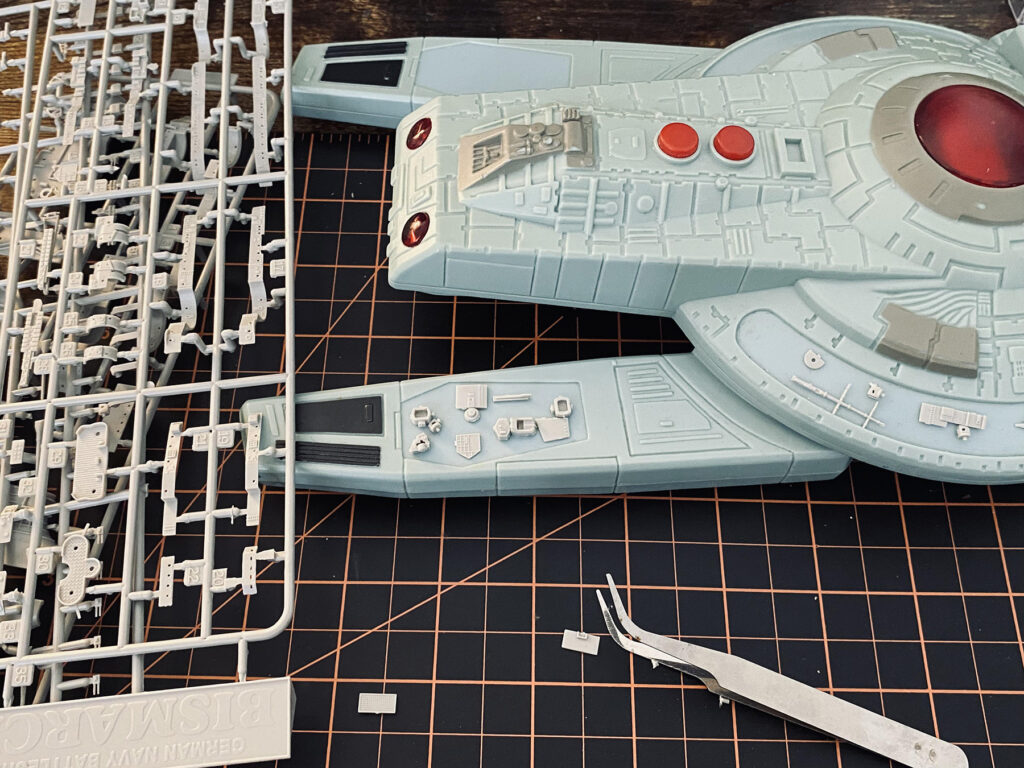
The Acheron was the first model I tackled. Like I said, it had a lot of the texturing already done, but there were smooth areas here and there once I got all the stickers removed that needed to be filled in. So I did what they did back in the day and started buying up model kits. I stuck mostly to aircraft carriers and started gluing down tiny piece after tiny piece. Then once it’s all spray painted you get a pretty decent 70s era-looking spaceship.

The fighters were a little easier to tackle. I just needed to attach engines and guns to them, paint them, and we’re all set. The Federation starfighters’ engines I wanted to give a bit of a throwback to the original series, and have those round engines like the shuttlecraft from that era. It’s actually the same technique I used for the scout ship in Commanders. In reality they’re just test tubes. I had a 50-pack left over from Commanders, so there were spares. Might as well use them.
The Klingon battlecruiser was probably the most challenging. It feels like such a classic shape, but finding anything other than existing Trek ships with that design wasn’t happening. So I really had to kitbash that one together to get what I wanted. I found a cheap and damaged Starbird toy and cut off the front of that. Then I bought this space pod toy that I’m pretty sure is meant for preschoolers and flipped it upside down to create that front section of a Klingon ship. The engines were those Force Link readers that came out with the Star Wars: The Last Jedi toy line. Then once again, I glued on random model kit parts everywhere and painted the entire thing.
JONATHAN – How long that that particular aspect of pre-production take to complete?
JEFF – The model building took probably three or four months. And really you start to realize why people aren’t doing this much for film. It’s an expensive and time-consuming process because it’s not just the ships that you need to build. You have to buy paint; you have to get a blue screen to film them in front of. You’re also gonna need to find something to mount them on, which in my case was a PVC pipe wrapped in blue screen material. Then I’d either tape or glue the models to.
JONATHAN – How about the sets?
For Defenders, I wanted to do something that was very akin having a “studio-bound” film. All my other movies have had location shoots. And those are cool, and really help things feel cinematic, but they can also be a pain in the ass to schedule and coordinate with the actors. So I was like “what if I treat this one like a bottle episode” and just build a couple sets, and that’s all we have to work with?
When it comes to set building, I don’t have an ounce of skill doing set construction with proper materials like wood and drywall. My grandpa did construction all his life, so I’m sure he’s looking down wondering how his legacy got reduced to this.
But what worked on Commanders was building spaceship sets out of foam board and duct tape. It’s something I can put together quickly and cheaply…and tear down just as quickly. But this time around, I needed to be more detailed than what I had done before.
To imitate that 70s look, I was gonna need to find a way to have backlit control panels and random detailing to fill out the foam board panels. I’m also not an electrician. So what I did for the control panels is spray painted a bunch of keyboard caps different colors and glued them to black plastic boards with holes under them. Then I took wireless LED lights and duct-taped them to the other side of the set. The end result gets you a pretty decent backlit control panel.
For the round lights you see, those were these portable LED lights that you could activate and change the colors of with a remote. And finally the larger screens you see were LED tracing lights typically used for drawing or sketching. I just taped them down with a colored gel in front. To fill out detail on the set I used cheap plastic pipes and plates from a dollar store I painted.
There were only two sets I needed for this: a starfighter cockpit and a control room on the Acheron. First assumption might be that that set was the bridge. But the way I figure it—and I’m not up to speed on how this actually works in the navy—but I doubt it’s actually the captain of a ship coordinating fighter operations. There’s probably someone in a traffic control room monitoring and issuing orders. So I just call it a control room.
The easiest and cheapest place to build all this was my apartment living room. That way when shooting we don’t have to worry about renting space or time limits. But it sure doesn’t give you a lot of space. It’s only about a 10 foot by 12 foot room. So when you factor in a camera and lights, you’re not gonna get a lot of people in there. Doesn’t matter much for a one-man fighter cockpit, but for a control room on a starship all I could really do was a wall with two people. But hey, Star Trek did that all the time so it felt right in the end.
JONATHAN – How about the costumes?
JEFF – Costumes went through a few different ideas. For the fighter pilots, I thought maybe a jumpsuit would work, maybe something red to imitate the X-wing pilots’ orange jumpsuits but with a Trek flare. But that just felt too garish. So I figured something gray. And then I started looking at how the viper pilots on the original Battlestar Galactica wore jackets. So maybe something gray and a jacket would work for me. I started searching online for gray jackets that didn’t look too modern or overly designed—or even too simply designed—and I came across these jackets that had an interesting lining pattern in them that kind of reminded me of the Next Generation uniforms. Everything about this movie is set in the 23rd century, but the way I looked at it, these designs could work as a precursor for what would be used on Next Gen, both in-universe and as inspiration for those costume designers “a decade later.”
The Acheron uniforms were originally going to have the classic Trek department colors with your typical black shoulder or collar look. But the more I thought about it, if I’m trying to make this film look like it was made in the 70s, I really should be going in that design direction. And the best way to imitate that was to come up with something that was somewhere in between the original series and The Motion Picture. So you have the rank braids and delta from the original series, but also those beige uniforms with department color epaulettes from TMP.
JONATHAN – How did you go about casting the roles for this film?
JEFF – For actors, everyone in this film is someone I’ve worked with before. Returning from Commanders of Starfleet were REID SCHMIDT and COLTON SMITH. Reid had played Jack Brennan, and Colton had played the Romulan commander in that film. Both are Trek fans and were excited to come back and play new roles in a different era.
Newcomers were EMILY KRUSCHE-BRUCK and HANNAH PEARCEY. Emily’s actually been a mainstay in my films for a long time now, and we’ve even co-directed a film together. So having her come in for this was a no-brainer. Hannah had done background work on a previous film of mine, so I asked her if she’d be willing to do that again for this.
So really, this is the first time I haven’t had to do any casting to find people. Aside from having awesome people already to work with, that was a bit of a conscious decision. When your entire pitch is, “So I’m making a Star Trek fan film, and building a spaceship out of foam board and duct tape in my apartment living room…” it’s still weird, but feels less weird to say it to people you’ve already worked with before.
JONATHAN – How many days did you shoot principal photography for?
JEFF – We only shot two days, the last weekend of January 2024 and first weekend of February. Since I had limited space, I could only have one set up and running at a time. So I started with the starfighter. With that, I thought it best to have Reid and Emily together feeding each other lines since they’re supposed to have a pretty tight bond in the film anyway. But if scheduling hadn’t worked out, it was something I could’ve easily shot separately.
The fighter stuff went pretty quick. I shot Emily’s scenes first, and then switched to Reid. Emily stuck around to get the back-and-forth banter that their characters had (and lunch). Then she left, and it was me and Reid filling out the dialogue with the Acheron, and all the action he has on his own. Altogether, I think we started at 10 am, and were done by 3pm.
JONATHAN – Looking at those wigs, they are mighty 70s-ish!
JEFF – When you’re trying to make things look like they were shot in the 70s, hair is important. The downside is when your actors are constantly shooting other projects, they’re not so willing to grow out their hair for your fan film. But that’s where the power of wigs comes in. Emily’s hair was about shoulder length at the time, and in my head I needed her with long flowing 70s hair. So I bought a wig for that and she showed up and tried it on. We ran some camera tests, and yeah, it would work, but something didn’t feel right.
Reid showed up a bit later, and what’s great about him is the man loves his costumes. Every Halloween, he’s going as some sci-fi or fantasy character. So he’s got a stockpile of wigs. He brought two for the shoot because I wasn’t sure which would work best for him. The first was a blonde Anakin Skywalker wig, and the other was a Frodo Baggins wig. The thing with Reid and Emily is that we’ve been working together for so long now, that formality on set has long since gone out the window. It’s nothing but sarcastic banter at this point. So it was a lot of “This long wig Jeff got sucks!” and “Maybe if you had longer hair this wouldn’t be a problem!” going around.
So we jokingly said she should try on the Frodo wig. Emily puts it on, and first it’s all, “Hahah, this is ridiculous, you look like a hobbit!” and “How did my acting career come to this?” But then we did a camera test with it, again just for the laughs. But Emily would not take it off. And the longer it was on, the more I started to get a Sigourney Weaver/Aliens vibe from her. So we rolled with it. And honestly, I don’t regret it all. Maybe the money I spent on the long-haired wig, but it’s whatever.

JONATHAN – When was your second day of filming?
JEFF – It was the following Saturday when we shot the Acheron scenes. I had the primary wall for that set already built and just dismantled and repurposed the starfighter set to create a second smaller wall. That way, I could at least get a second camera angle. Colton doesn’t act as much as Reid or Emily, so I actually got him to grow a mustache for his part. He and Hannah were great. Slightly less sarcastic banter with those guys, but not by much. I think we got everything done that day in four or five hours.
All-in-all it was a fun shoot, where everyone was having a good time. We weren’t taking things too seriously, but still getting the job done.
JONATHAN – How long did post-production take, and what was involved?
JEFF – Post-production might as well have been pre-production on this. Scheduling actors gets a bit challenging come October to December with all the holidays going on, so I figured I could work on the VFX then and shoot the actors when their availability freed up in the new year.
For the most part,, the model shots were static—just mount the ships and pick an angle to shoot them. I guess it was almost like still-photography in that way. There were a couple of shots where I had the camera move past the ships. I didn’t think it was worth spending the money on a camera slider. So what I did was took a stack of books, placed my camera on top, and slid the entire thing across a table to get those types of shots. Not sure it was 100% effective, but I wasn’t going for Star Wars-level effects anyway. I wanted this to look like one of those B-movie Star Wars knockoffs where the budget is almost non-existent, but they’re still trying. Pretty much like Roger Corman’s Battle Beyond the Stars, or an episode of Battlestar Galactica where they just don’t have the money that week.
Once most of the models were shot, I dropped the footage into Premiere Pro and started compositing in star backgrounds and laser beams and all that. By the time February rolled around, I had maybe 80% of the FX work done. Then it was just a matter of editing it all together. Basically, here’s footage of the actors…okay, drop in the clip of a fighter flying through space…actor footage…space battle footage, etc. A week in, and I had pretty decent rough cut done.
And then my external hard drive crashed.
JONATHAN – Oh, say it ain’t so!
JEFF – I tried everything to get it back, but it was all gone—all the VFX work, the rough cut, everything I had saved. Pretty devastating moment in film history for sure. Fortunately I still had all the raw footage of the models and actors on my camera. So nothing had to be reshot. I just had to put it all back together.
JONATHAN – But, man, all that time and effort…lost! How much did that delay the release?
JEFF – I had told people I’d have the film out by mid-March. And yeah, there wasn’t any real reason to hold to that if I couldn’t make it. But I was adamant to stick to that deadline. So every day after work, I was redoing the effects shots and editing the film…lots of long, stressful nights. On the plus side, it really only took me about a week to get everything back up and running. Pretty sure that says more about my levels of procrastination than anything else!
JONATHAN – Ha! So what came next?
JEFF – With an actual cut of the film done, it was time to move on to music. My first idea with music was just to use existing music from 70s and 80s era sci-fi films. But really I didn’t like that notion so it got shelved almost as fast as it came up. Using existing music worked for Commanders because that’s exactly what they did for those old serials—just dropped in pre-existing classical music. If I was really going to make Defenders feel like it came from its era, the music needed to match.
JUSTIN BELL is, like my actors, a composer I’ve collaborated with on a prior film. I wasn’t even thinking of music yet when I posted a picture of one of the uniforms or ships on Instagram. He messaged me: “Are you working on a Star Trek fan film??” to which I replied ,“Yeah, I wanna make it look like it has a 70s Star Wars/Battlestar look to it.” And that was pretty the end of that conversation. But flash-forward a couple months, and I asked him if he’d be willing to compose the music for Defenders and that was I was looking for something that would have a Battle Beyond the Stars/Black Hole sound to it. Turns out he loves Star Trek and had been wanting to try his hand at a more orchestral score too. You don’t get that much with modern movies.
So Justin’s in. I sent him examples of music from Roger Corman’s Battle Beyond the Stars (also scored by Wrath of Khan’s JAMES HORNER) and Disney’s The Black Hole. I love those two movies. They’re not the greatest stories—and very clearly aping on the success of Star Wars—but so am I with this, and the music for both films is just great. That’s what was important here.
Justin took the examples and created a temp cut from them. We then went through it, talking about what music works best for which scene and the emotion behind it. Justin would shift the music around until we came up with a cut that had the right sound to it. He then spent about a week working on his own original score. He sent me the first draft, I gave notes on what I thought worked best and what didn’t. It only took him a few days to make the revisions, and we were off.
JONATHAN – So it was ready for release?
JEFF – Almost. The final salvo to make this film look like it was shot 50-some years ago was to add film grain. In hindsight, I probably could’ve been a bit more aggressive with it. I feel like the footage still looks too pristine, but I don’t know. I guess we can say someone did a 4K remastering of it at some point.
Like with Commanders, I threw in film scratches here and there. It’s more subtle in Defenders, but hopefully it’s something that helps trick your brain into thinking this movie is old. I feel that’s key…especially when the effects, even if intentionally, aren’t state-of-the-art.
JONATHAN – Any plans for another fan film? If so, what decade will you be tackling next?
JEFF – I’m not actively working on any fan films at the moment. That doesn’t mean there aren’t ideas. If/when I do another, I could see myself going back to a 40s Flash Gordon-type thing, continuing with the 70s, or honestly going in a completely different direction again. I’m just going where the fun is!






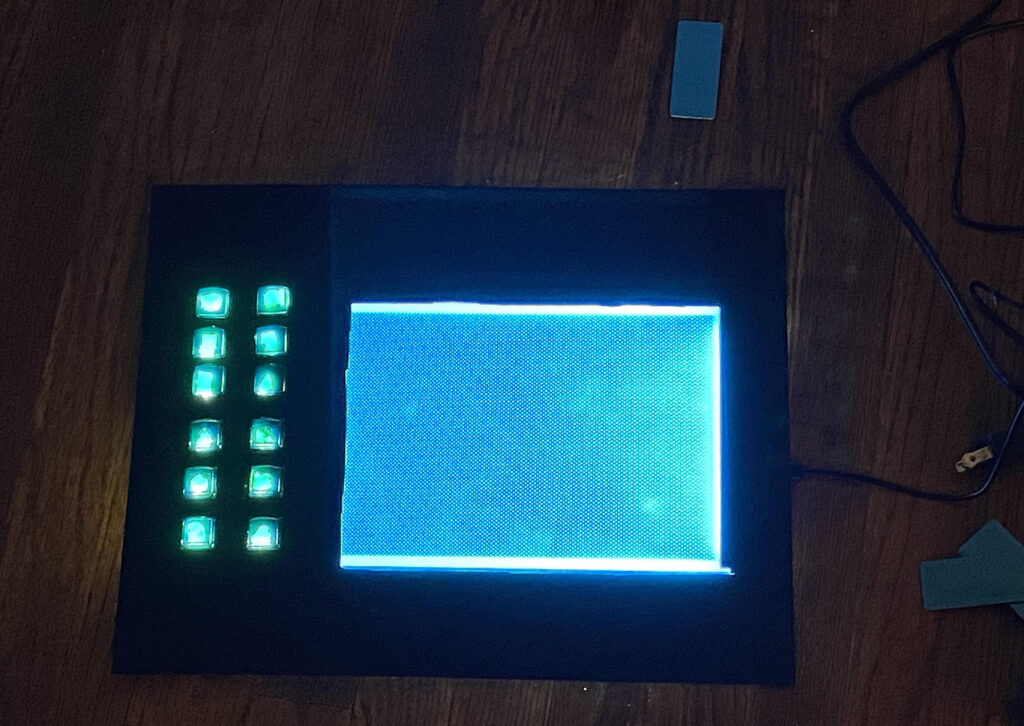

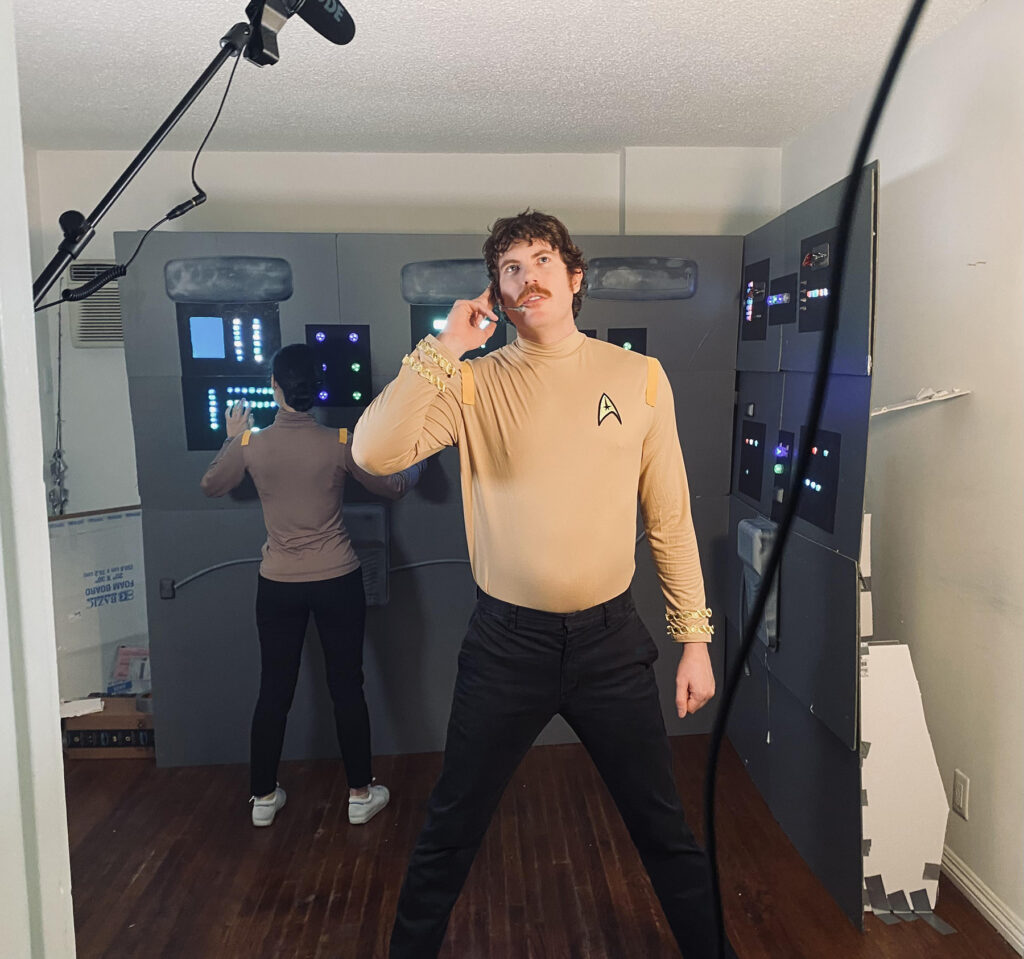
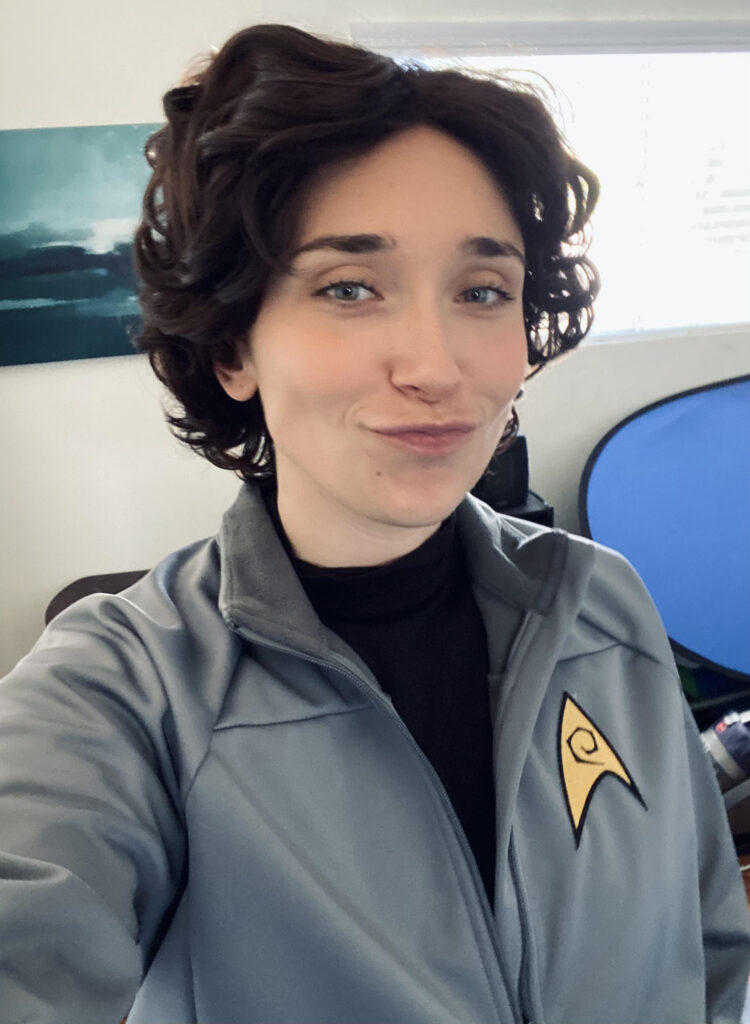
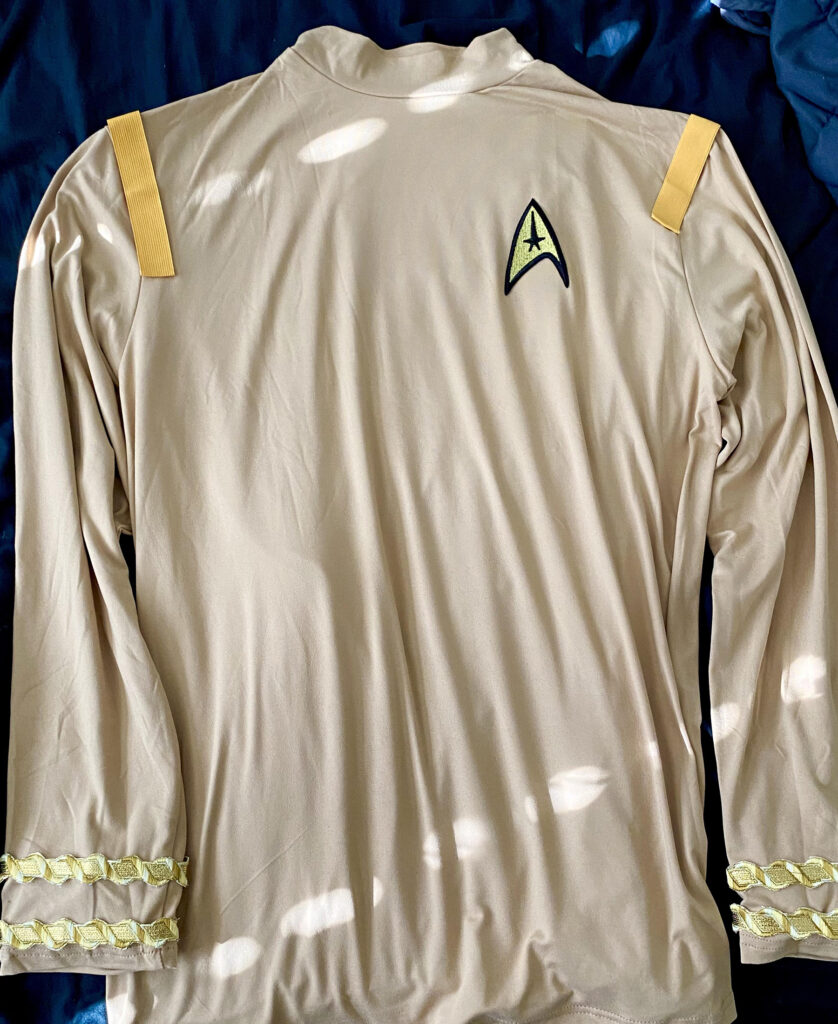


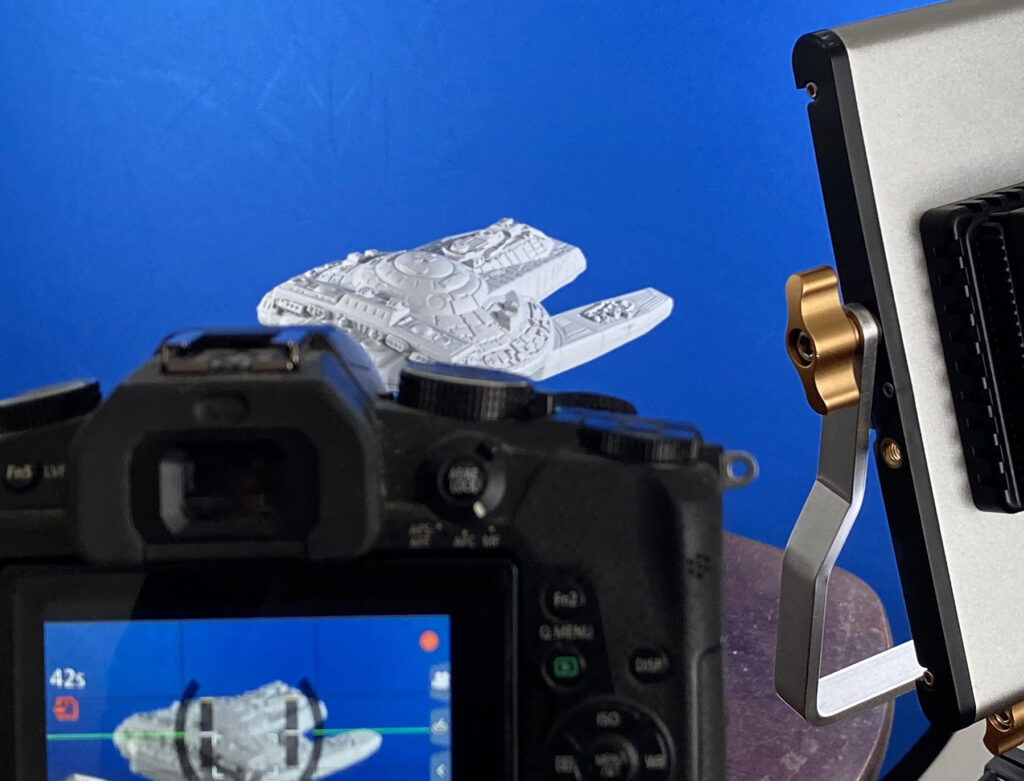
Pretty good little fan film. And the fact that another Star Trek character “can’t follow orders” actually lends some authenticity. Plenty of opportunities to do a follow up on this 70’s ish film. For one, a Court Marshall of the fighter pilot, and the fact he helped end the fight, by saving the Klingon pilot, mitigating circumstances, in his favor. Or, reverse, he’s tried by the Klingons for robbing the pilot of an “Honorable Death?” Both would be simple to do in his Living Room! Even using the same actors, dressed for the new roles? Que the Jeopardy music.